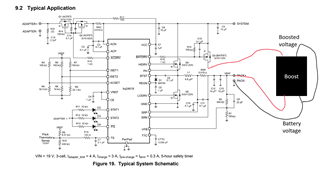Other Parts Discussed in Thread: BQ24172, BQ24618
Hi support team,
My first question is, Does BQ25750 is completely standalone and doesn't need to be programmed or controlled by I2C?
My main design Description: I'm looking for a battery backup charger IC, preferably operating standalone with a thermistor feature.
my system input and output voltage is between 5-12V, and if the power source is disconnected, the IC can switch to the battery and power the load, it basically has the power path option.
Also using 1cell, 3.7V battery, so any IC that boost the battery voltage to 5-12V to support the load. I would appreciate introduce me any IC available with these requirements
Thanks in advance


